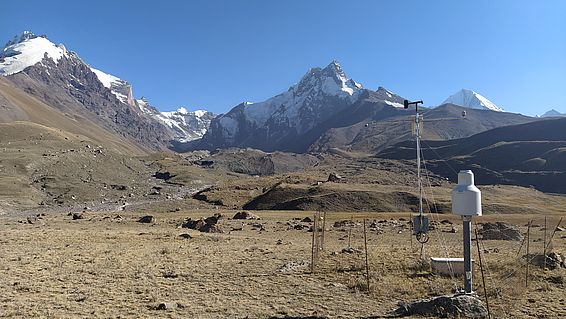25.01.2022 | Beate Kittl | News WSL
While glaciers are shrinking worldwide, those in the Pamir Mountains in Central Asia show less change. They and the other components of the cryosphere (snow and permafrost) are key unknowns for future changes to runoff and hazards. Over the next four years, a research consortium led by the Swiss Federal Institute for Forest, Snow and Landscape Research WSL and the University of Fribourg will comprehensively study this unique environment. The Swiss Polar Institute (SPI) has awarded CHF 1.5 million to this SPI Flagship Initiative.
A second SPI Flagship Initiative called GreenFjord is also endowed with 1.5 million Swiss francs. It is led by EPFL, with Loïc Pellissier from WSL participating. This iniative aims to create process understanding of how climate change affects fjord ecosystems in Greenland, and how perturbations propagate to biodiversity and livelihoods. https://swisspolar.ch/2021/12/the-first-spi-flagship-initiatives-have-been-selected/
The Pamir Mountains in Central Asia cover an area of about 120,000 km², of which about one tenth is glaciated. They lie at the junction of the Tien Shan and Karakoram ranges, and exhibit little ice mass change over the past 20 years, in contrast with most other glaciers in Asia and globally. But in the medium term, climate change also threatens this ice, which supplies water to the Amu Darya basin. This important mountain water tower has been shown to be particularly vulnerable to future climate changes.
In the SPI Flagship Initiative, more than 30 Swiss researchers will investigate the mystery of this region’s anomalous ice, for which few measurements have been available since the collapse of the Soviet Union. In a total of six sub-projects, the scientists will investigate changes to the snow, glaciers and permafrost, their consequences for river discharge and ecology, as well as natural hazards. Other research will disentangle the history of Soviet glacier investigations in the region, providing an important backdrop for contemporary questions. A high-elevation ice core will document the past climate of the region, while meteorological stations will record the current conditions.
These on-site studies over the next four years will provide crucial data for modelling the future of the ice masses and the water flowing from them. "Because of the looming end of the Pamir-Karakoram Anomaly, this represents a timely and urgent task," says WSL co-study leader Francesca Pellicciotti.
Contact
Project
Links and documents
Swiss Polar Institute Flagship Initiatives
SPI Flagship Initiatives are multi-annual programmes combining science and technology projects from different disciplines and different groups / institutions in Switzerland around a polar focus region.
WSL Blog
Copyright
WSL and SLF provide the artwork for imaging of press articles relating to this media release for free. Transferring and saving the images in image databases and saving of images by third parties is not allowed.

